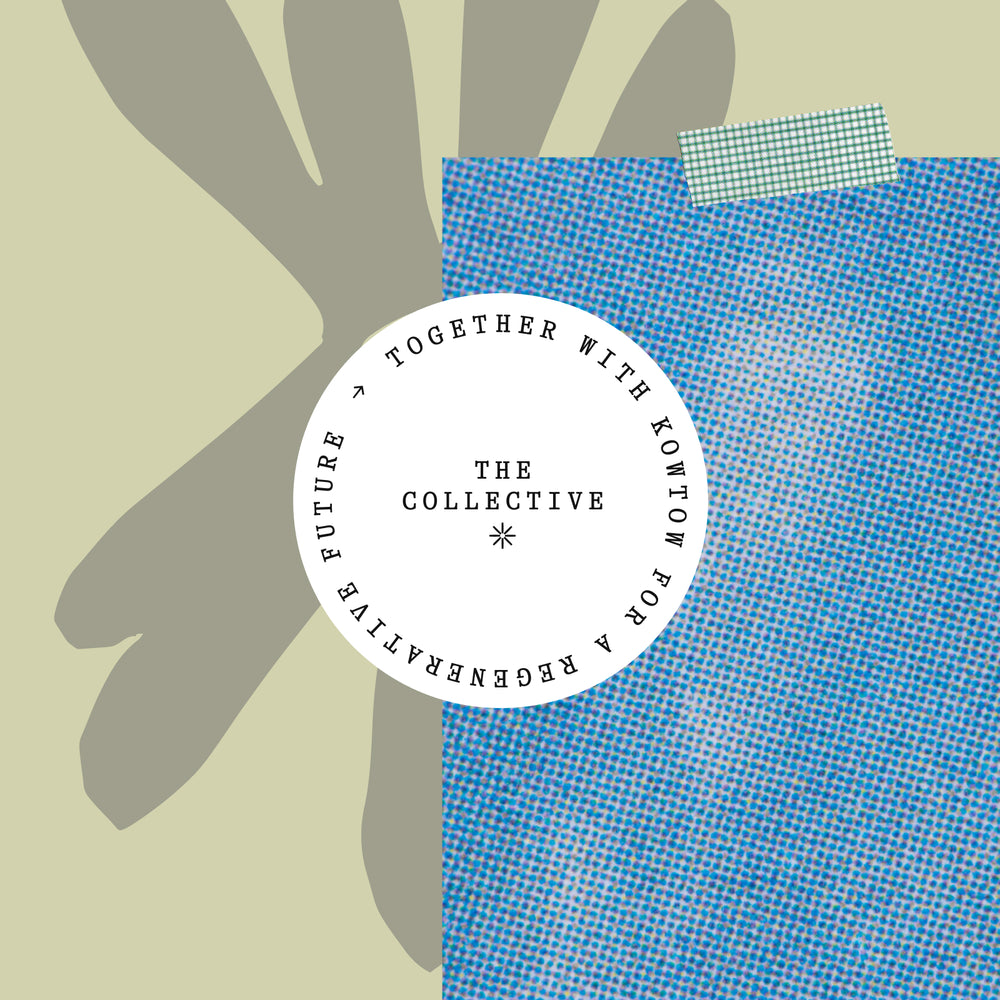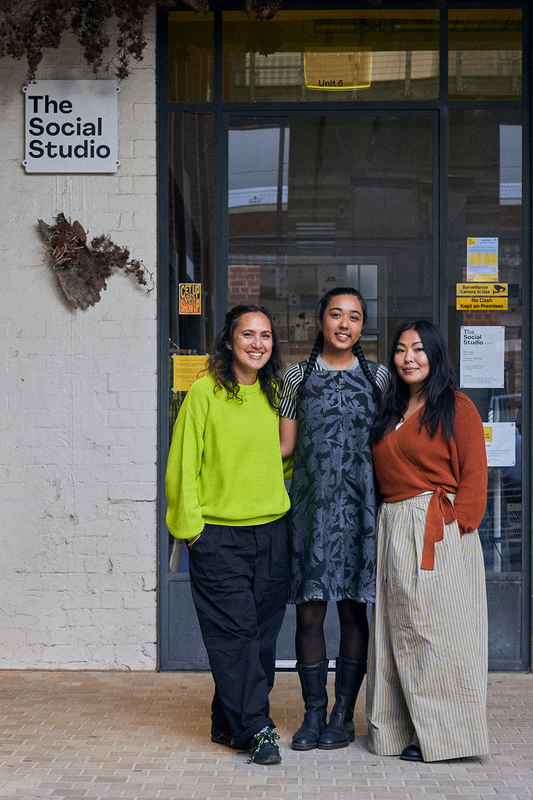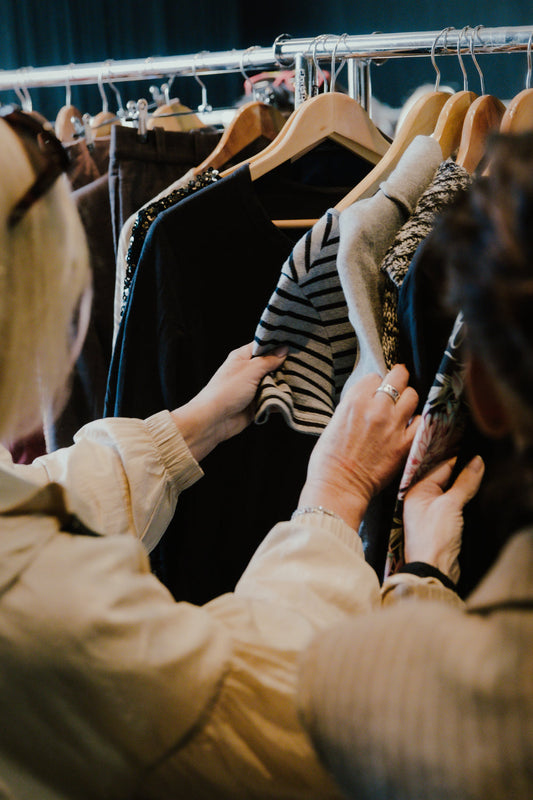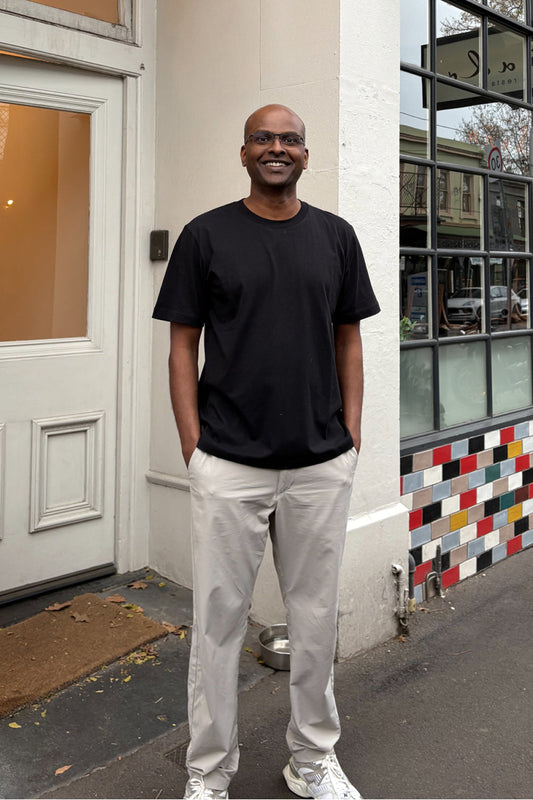Sustainability has been at the top of the fashion agenda for a couple of years. As the world stands teetering on the edge of climate catastrophe fashion lovers everywhere are increasingly demanding more accountability and transparency from brands. But, with all this demand for more sustainable practices, the majority of the conversations around sustainability still take place within the current paradigm: the same money systems, the same hierarchical structures, the same western-centric worldview, the same assumptions around nature as resources and our assumed rights as individuals to benefit from the use of these resources. These systems are all part of the wider structural make up of fashion which have been very carefully designed to sustain a corporate-capitalist agenda - not designed to sustain life. Life is the cost that is sacrificed to sustain economic growth, and sustainability has now, in many ways, become a slave put to work to serve the system. I believe that any truly ‘sustainable future’ requires an entire paradigm shift, and in order to think beyond our current paradigm we must first expand our visions for the future of fashion.
Much of the current visioning for fashion happens only within the boundaries of what is considered possible within this paradigm, but there’s an urgent need for a paradigm shift, and without the ability to imagine anything beyond what is, then it will never be possible. Visioning new and expansive futures for fashion takes practice. It can take time to play around with, and get comfortable with the expansiveness of all the possibilities that imagination can offer. Expansive visioning is an activity of the heart and the imagination that starts with getting out of our heads and dropping into our hearts.
These visions will always sound like impossibilities when imagined from within the current paradigm, but without the ability to first imagine them they will remain impossible. Just as with all great movements that went before us: women’s rights, civil rights, LGBTQI+ rights — in the beginning change seemed inconceivable. It required someone to first hold new visions for the future, and while there is still much work to be done many of us have now joined in the practice to collectively imagine and work towards shared futures of equality. This practice of visioning is a revolutionary practice.
So let’s begin with some questions and start playing with the practice of imagination...
Of all the things we could hold a new vision for in fashion, perhaps money is the hardest one. Money may be one of the most challenging things for us to reimagine in fashion because the modern fashion industry has been in bed with consumerism since its birth at the very beginning of the industrial era. There are only so many garments one person needs. Knowing this the fashion industry carefully constructed narratives designed to manipulate people into believing that their self-worth was tied to their ability to keep up with trends. In some ways many of the sustainable and ethical brands who had hoped to be the antithesis to consumerism have just perpetuated these harmful narratives. Only now instead of marketing someone their sense of worth they are marketed a sense of woke-ness. They say the clothes make the man - it seems we bought the lie.
We often forget that money is simply a social agreement. One where we assign a certain value to a piece of paper or numbers on a screen. But, if money is a social agreement, one that works well for a few but not the many, then there exists the possibility to make new social agreements. In the current paradigm mass production is incentivised, minimum quantity orders often force brands to order more than they need, and the more they make the cheaper it becomes. But where do those resources come from? Who owns the land? Who owns the air and the water which is polluted by production activities? Air pollution, pesticide and herbicide runoff, dye run off, textile waste — none of it can be siloed — rivers flow, air moves with the weather cycles and land remains poisoned for generations to come.
But what if our money system changed, and instead began to incentivise ways of doing business that were more conducive to life? We must rethink money and our addiction to ‘growth’. When will enough be enough? How big is too big? What does it mean to be ‘successful’ as a brand? Growth requires more resources, but it also requires finding new ways to manipulate consumers into believing they aren’t yet enough, that their lives would be better off with a new wardrobe. What if we could rethink our relationship to money, each other and the world around us?
One of the visions I hold for the future of fashion is a transformation of our relationship with money and a return to the commons.
In his book Sacred Economics the visionary author Charles Eisenstein talks about returning to the shared commons. “We live on a naturally abundant planet, the source of life-sustaining gifts for us all... the planet’s riches—soil, water, air, minerals, the genome—were created by no man and should therefore be the property of none, but held in common stewardship for all beings. To be cared for and shared by all.” He writes about a system that would fully internalise the social and ecological costs of production and then financially incentivise producers to minimise their use of the commons. In fashion this would mean that instead of incentivising mass production, the more efficiently that a brand used what they had, the less pollution they created, the less waste, the less resources they used the cheaper production would become. By rethinking the way we do business and by holding brands accountable to the commons we have the opportunity to transform our relationships with each other, the natural world and with what we buy and own. Fashion supply chains are complex systems with many moving parts, often spanning multiple countries. It has been, in large part, because of the complexity of these supply chains that the industry at large has been able to get away with gross exploitations of some of the most vulnerable communities. Colonial attitudes of the past are still prevalent within the fashion industry today with the West exploiting ‘developing nations’ for cheap labour and natural resources in order to provide the Western and global economic upper classes with cheap and disposable clothing. Within these supply chains there exists a hierarchy of human value. At the top of the value chain is the designer and the CEO and at the bottom are garment workers and cotton farmers.
How do we foster a sense of responsibility and community within fashion brands? What if the salary of the lowest paid member in a supply chain was directly tied to the salary of the CEO? Imagine that a CEO could only earn 100% or 200% more than a garment worker? Would they pay the garment worker more, or earn less? Would tying the salary of the CEO directly to the salary of the garment worker help CEOs to develop empathy, wonder, questioning, and responsibility? By asking deeper questions about these hierarchies we have the opportunity to imagine something else in its place. I hold to a vision for a future in fashion where ‘supply chains’ are replaced by fashion communities. Commu-nities of farmers, artisans, weavers, creatives, designers, and CEOs. Where each person’s role is in alignment with their highest purpose and creativity, where each community member is equally valued and respected by the others for their contribution, where everyone is known by name.
FMy vision for the future sees fashion move from supply chains to a network of relationships. Close your eyes and imagine what it would feel like to be in deep relationship with every part of your supply chain, including Mother Earth. What would it feel like to listen to the land, to listen to the plant, to the fibre? Play with the idea that the cotton plant wants to express its greatness by gifting its fibres to you, it is your job to honour its life and turn it into something beautiful. Imagine what it would feel like to move away from our current relationship with the natural world as ‘resources’, into a relationship of kin-ship.
The immediate transformation in the way we would use and honour that plant, and the Land. Most fashion supply chains are so complex, so far removed from the end-user, and from the brand itself that very little thought is given to the ongoing effects of mono-cropping, pesticide and herbicide use, dye runoffs and factory pollution... It stays as someone, somewhere else’s problem. Even brands who are committed to sustainability often remain disconnected. But imagine you knew the name of the River that waters the Land, who calls that River ancestor, whose sacred waters are these? Imagine you know the history of the lands on which your fibres are grown? What people call this Land home? Relationships hold you responsible, they take time, and commitment. When we transform our relationship with ‘resources’ into a relationship with kin everything around us changes.
If we were to listen close enough we would hear the Land whispering:
SLOW DOWN,
TAKE TIME,
HONOUR THE LIFE YOU ARE TAKING TO CREATE
SOMETHING NEW,
MAKE IT COUNT FOR SOMETHING.
Talk about inclusion and representation has been trending in fashion with movements like Black Lives Matter gaining international attention and forcing the industry to face off with its long history of prejudice, racism, exclusion and appropriation. In response there have been both genuine and tokenistic attempts at inclusion. While on the surface it seems like a step towards equality the problem with representation and inclusion is that they can only take place when there is a power imbalance. Inclusion relies upon the goodwill of the Includer to extend an invitation of inclusion to the Excluded, it requires no systemic change. It is the powerful versus those with less-power or the power-less, and if inclusion must be given, it can also be taken away. Inclusion and representation in systems that were purposefully designed for the benefit of the few at the expense of many marginalised communities is not true equality, at best it can be called assimilation, at worst further exploitation of already exploited groups for economic gain. There can be no sustainable future until we become serious about addressing the power imbalances in fashion.
One of the visions I hold tightest to for the future of fashion is one of partnership. Partnership is a relationship between equals that is founded upon respect and celebrates differences. For the longest time I thought that diversity, inclusion and even partnership meant that everyone sits at the proverbial table of fashion as equals, but I have come to believe, as Charles Eisenstein shares in the Banquet of Whiteness, that partnership recognises there is more than one table. The dominant western way of doing things is only one way, one table, and there are many other tables at which sit many brilliant minds with different values, perspectives, spiritual and cultural worldviews. Partnership exists beyond the hierarchies of fashion — it is where everyone has something of value to contribute, beyond just their labour. Partnership is co-creative, it is relational in nature and community centered. I hold tight to a vision where partnership can exist throughout the entire fashion system, even between farmer and CEO.
And now it is your turn to dream up new worlds, to imagine new futures. It is in our collective imagination that the possibility for a truly thriving, sustainable and fair future exists. As you actively begin the practice of visioning expansive futures for fashion you engage in a revolutionary practice, one that is urgently needed.
ABOUT THE AUTHOR
Amie Berghan (Ngāpuhi and Ngāti-wai) is a creative who plays at the intersections of fashion, sustainability, and indigenous wisdom. She is the co-creatress of Sustainability 5.0 and Spirit of Design Podcast and is currently undertaking a Masters inIndigenous Studies at the University of Auckland.
@amie_berghan
Auckland, New Zealand





